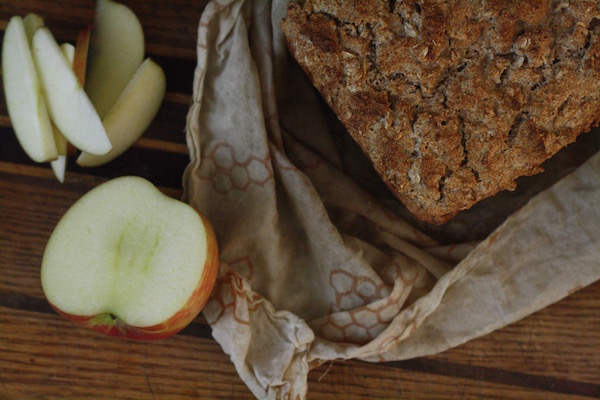Heyo !
Honeybee health on the Local Food Report today. Give a listen if you can. So many factors involved—travel, nutrition, queen genetics, habitat loss, pathogens and predators, pesticides—the list is long and disarmingly familiar in the way it overlaps with human challenges. Today's interview is with Larry Dapsis, entomologist for the Cape Cod Cooperative Extension, and an excellent resource on all things insect. It's part of a mini series on local pollinators, the challenges they face, and what local citizens, farmers, and activists can do to help. Next up: a local beekeeper breeding for resistance against varroa mite.
And quickly, before I go—
Besides pollination and honey, one more reason to care about bees: beeswax. Two beeswax resources I've come to love over the past few years for keeping a low-waste, healthy home: the first is Bee's Wrap—basically a beeswax and linen substitute for plastic cling wrap that you can use over and over again (see below for a photo of a very loved large piece that wraps our daily bread).
Besides pollination and honey, one more reason to care about bees: beeswax. Two beeswax resources I've come to love over the past few years for keeping a low-waste, healthy home: the first is Bee's Wrap—basically a beeswax and linen substitute for plastic cling wrap that you can use over and over again (see below for a photo of a very loved large piece that wraps our daily bread).
Second is homemade beeswax and olive oil body butter—our local candle shop sells beeswax by the pound. I melt it down and add olive oil in a ratio of 1 part beeswax to 4 parts olive oil, then pour it into jars. (There's a great tutorial on calculating the right ratio for your salve needs here.) It takes about 5 minutes and cools to just the right consistency for dry skin, especially hardworking hands. You can add a few drops of lavender oil or other essential oil for a little scent, but I also love slightly sweet, comforting smell of the beeswax itself.
Happy spring !
Happy spring !



120 comments :
Post a Comment